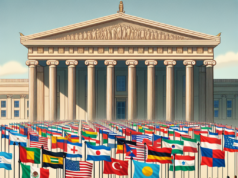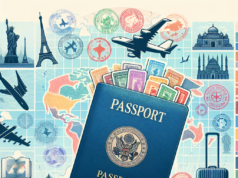
===
In recent years, the global refugee crisis has reached unprecedented levels, with millions of individuals fleeing conflict, persecution, and environmental disasters. However, the stark reality of refugee admissions today reveals a troubling decline in resettlement numbers, raising urgent questions about the international community’s commitment to protecting those in need. This article explores the current landscape of refugee admissions, the factors contributing to their decline, the human stories behind the statistics, the implications of policy changes, international responses, and potential strategies for improving the situation.
Understanding the Current Landscape of Refugee Admissions Worldwide
As of 2023, the United Nations High Commissioner for Refugees (UNHCR) reports that over 26 million people are classified as refugees, with millions more internally displaced. Despite the growing numbers, the global resettlement of refugees has seen a significant downturn. In 2022, only 22,000 refugees were resettled through UNHCR’s programs, a stark contrast to the 107,000 resettled in 2016. This decline is not merely a statistical anomaly; it reflects a broader trend of countries tightening their borders and reducing their commitments to international refugee protection. The current landscape is characterized by a fragmented approach, where only a handful of nations bear the brunt of resettlement responsibilities, leaving many refugees in limbo.
Key Factors Contributing to the Decline in Refugee Resettlement Numbers
Several key factors have contributed to the decline in refugee resettlement numbers. First and foremost is the rise of nationalism and anti-immigrant sentiment in many countries, leading to stricter immigration policies and a reluctance to accept refugees. Additionally, the COVID-19 pandemic has exacerbated existing challenges, with many nations implementing travel restrictions and prioritizing domestic issues over international humanitarian obligations. Furthermore, geopolitical tensions and conflicts have created a complex web of crises, making it difficult for countries to coordinate effective resettlement efforts. Economic constraints and resource limitations also play a significant role, as many nations grapple with their own economic challenges, leading to a diminished capacity to support refugee populations.
The Human Impact: Personal Stories Behind the Statistics of Displacement
Behind the statistics of displacement lie countless personal stories of resilience and suffering. Take, for instance, the story of Amina, a young woman from Syria who fled her war-torn homeland in search of safety. After enduring a perilous journey through multiple countries, she found herself in a refugee camp, where she faced uncertainty and despair. Amina’s story is not unique; it reflects the experiences of millions who have been uprooted from their homes. The psychological toll of displacement, coupled with the challenges of integration in host countries, often leads to feelings of isolation and hopelessness. These personal narratives highlight the urgent need for a compassionate and comprehensive approach to refugee admissions that prioritizes human dignity and support.
Policy Changes and Their Implications for Refugee Admission Processes
Recent policy changes in various countries have had profound implications for refugee admission processes. In the United States, for example, the refugee admissions cap has fluctuated dramatically in recent years, with the current administration aiming to increase the number of admissions but facing significant political opposition. Similarly, European countries have implemented stricter border controls and asylum procedures, often prioritizing security over humanitarian considerations. These policy shifts not only affect the number of refugees who can be resettled but also create a more hostile environment for those seeking asylum. The lack of a cohesive international framework further complicates the situation, as countries adopt unilateral approaches that undermine collective responsibility.
International Responses: How Countries Are Addressing the Refugee Crisis
In response to the growing refugee crisis, some countries have taken proactive measures to address the situation. Canada, for instance, has implemented a private sponsorship program that allows citizens to support refugees directly, resulting in a more welcoming environment for newcomers. Similarly, countries in the Global South, such as Uganda and Jordan, have demonstrated remarkable hospitality despite facing their own economic challenges. However, these positive examples are often overshadowed by the actions of nations that prioritize deterrence over protection. The international community must recognize the importance of solidarity and shared responsibility in addressing the refugee crisis, as no single country can tackle this issue alone.
The Path Forward: Strategies for Improving Refugee Admissions Globally
To improve refugee admissions globally, a multifaceted approach is essential. First, countries must reaffirm their commitment to international refugee protection by increasing resettlement quotas and streamlining admission processes. This includes enhancing collaboration between nations to share the responsibility of resettling refugees. Additionally, investing in local integration programs can help refugees rebuild their lives and contribute to their host communities. Advocacy for the rights of refugees and raising public awareness about their plight are also crucial in combating xenophobia and fostering a more inclusive society. Finally, addressing the root causes of displacement, such as conflict and climate change, is vital for preventing future crises and ensuring sustainable solutions for refugees.
===
The stark reality of refugee admissions today underscores the urgent need for a collective response to one of the most pressing humanitarian challenges of our time. As the number of displaced individuals continues to rise, it is imperative that the international community comes together to uphold its commitments to protect those in need. By understanding the complexities of the current landscape, addressing the factors contributing to the decline in resettlement numbers, and implementing effective strategies, we can work towards a future where refugees are not merely statistics but individuals deserving of dignity, safety, and hope.


























